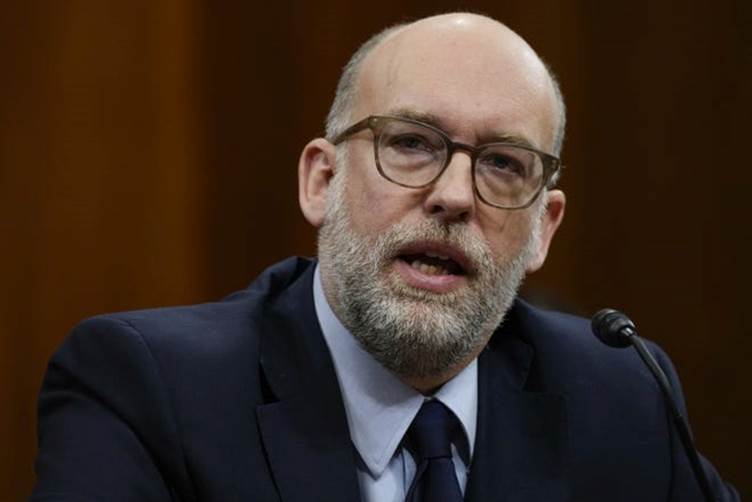Federal Employees in Limbo: Fired, Rehired, and Threatened Again
In the past few months, tens of thousands of federal employees have been caught in a chaotic cycle of being fired, rehired, and now facing the threat of being fired once more. This turbulence reached a temporary halt when a federal judge in California issued a restraining order on May 9, preventing any additional firings by the Trump administration. This reprieve, however, is only for two weeks, as the administration has since appealed to the U.S. Supreme Court, hoping to overturn the ruling and continue its plan.
The Emotional and Personal Toll on Federal Employees
The impact on federal workers has been profound, especially as many have found themselves uncertain about their job status. One federal worker, who preferred to remain anonymous due to fear of retaliation, described the situation as “inefficiency in the name of efficiency.” After being told they were fired and later reinstated, the confusion has created a deep sense of distrust and insecurity in their professional lives. Many workers, like this individual, are finding it increasingly difficult to trust their employer amid such unpredictable changes.

For some, the emotional strain of the constant firings has been overwhelming. One employee shared that the cycle of uncertainty has had a damaging effect on both their personal and family life. Stress levels have risen, work-life balance has been disrupted, and the emotional burden is being felt at home.
Legal Battles Over Federal Staff Reductions
The ongoing legal battle surrounding the firing and reorganization of federal employees is at the heart of the issue. On May 9, Judge Susan Illston of the U.S. District Court in California ruled in favor of a temporary restraining order, halting the Trump administration’s proposed reductions of federal employees across 21 government agencies. The judge’s ruling emphasized that the administration likely exceeded its authority by attempting such widespread cuts without approval from Congress.
This decision, however, has been appealed by the Trump administration, which is seeking to have the U.S. Supreme Court overturn it. The case, which involves a wide range of plaintiffs, including the American Federation of Government Employees, has drawn significant attention due to the broad impact it has on both federal employees and the future of government restructuring.
The Scope of the Reductions: A Far-Reaching Impact
The reductions in force proposed by the Trump administration would drastically reduce staff numbers across multiple government agencies. These cuts would affect organizations such as the Department of Health and Human Services (HHS), where 8,000 to 10,000 jobs were slated for elimination, representing a significant portion of the workforce. Other agencies, including the Department of Energy, Internal Revenue Service, and National Oceanic and Atmospheric Administration, were also facing severe downsizing, with some agencies planning to cut up to half of their employees.
The ripple effect of these cuts is already being felt in various specialized roles. For example, the National Institute for Occupational Safety and Health, a key agency conducting research on mineworkers’ health, was set to lose most of its staff. However, some positions have been reinstated after public outcry and legal challenges. Secretary of Health and Human Services Robert F. Kennedy Jr. confirmed that he had ordered the restoration of several positions, including those at NIOSH’s Pittsburgh office and other critical health programs.
The Role of Government Officials and Resistance to Reorganization Plans
Amid the controversy, some officials have strongly backed the plan to downsize the federal government, including Russell Vought, the director of the Office of Management and Budget (OMB). Vought, a key figure behind the Trump administration’s efforts to reduce government bureaucracy, has voiced his commitment to slashing federal spending and trimming down the size of government agencies. In private speeches, he has emphasized the need for reform, stating that the public voted for such changes in the 2024 election.
Despite these efforts, the reorganization plans have faced considerable resistance from both lawmakers and federal employees. The public and legal challenges have raised concerns about how these reductions will affect the ability of federal agencies to deliver essential services, as well as the potential long-term consequences for the overall efficiency of the federal government.
What’s Next for Federal Workers?
As the legal battle continues, the uncertainty remains for the federal workforce. The Trump administration’s appeal to the U.S. Supreme Court could alter the outcome of this case, and potentially impact the future of government staff reductions. What is clear, however, is that the situation has already taken a toll on the lives of thousands of federal employees. Many are left in limbo, unsure of their job security, and dealing with the emotional, personal, and professional consequences of the ongoing upheaval.
With further court hearings scheduled and more legal challenges on the horizon, the future of these reductions remains uncertain. Federal workers, unions, and advocates will continue to fight for their rights and for transparency in how these decisions are being made.Output in



